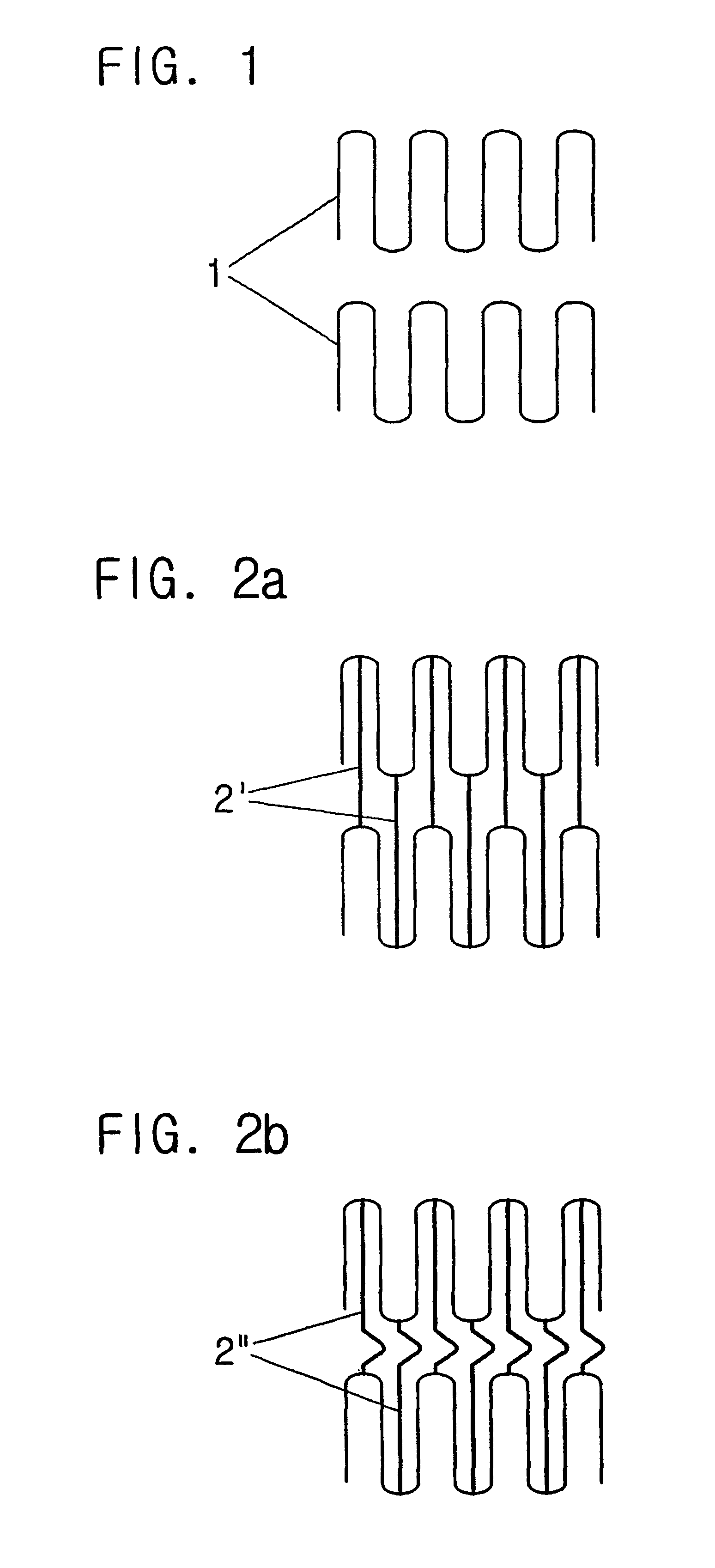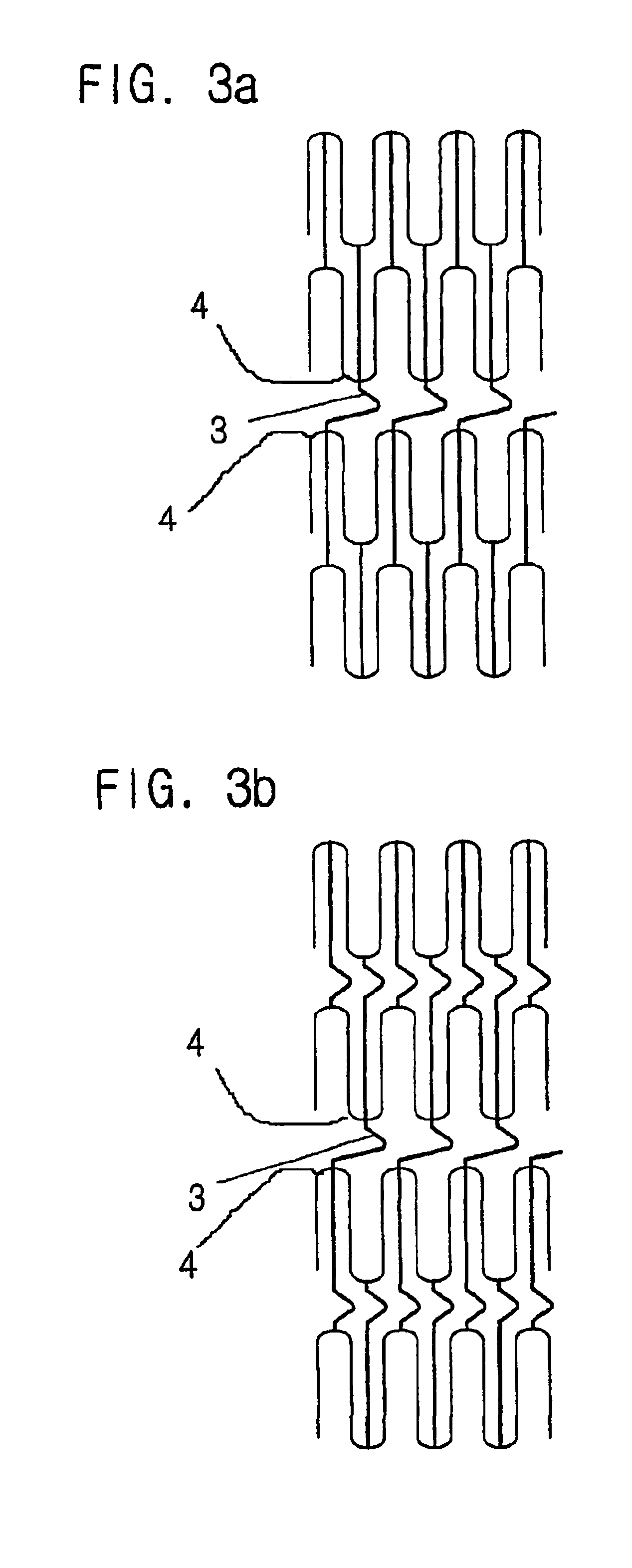Metal stent for insertion in coronary artery
a technology of metal stents and coronary arteries, applied in the field of medical devices, can solve the problems of excessive proliferation of neo-intima within the stent, artery stenosis and ischemia of the heart muscle, and the lack of oxygen and nutritive substances in the heart muscle, so as to improve the accessibility of sidebranchs, reduce the profile, and improve flexibility
- Summary
- Abstract
- Description
- Claims
- Application Information
AI Technical Summary
Benefits of technology
Problems solved by technology
Method used
Image
Examples
Embodiment Construction
Reference now should be made to the drawings, in which the same reference numerals are used throughout the different drawings to designate the same or similar components.
As shown in FIGS. 1, 2a and 2b, the coronary care stent of this invention comprises a plurality of primary stent units 1, each having a modified zigzag shape rounded at its bent portions and being expandable in a circumferential direction, and a plurality of first connecting struts used for integrating two primary units 1 together into a single structure to form a secondary stent unit.
In the coronary care stent of this invention, the modified zigzag structure of each primary stent unit 1 allows the unit 1 to be expandable in a circumferential direction when the stent is expanded. The primary stent units 1 thus enlarge the diameter of the stent in the case of an expansion of the stent. In the present invention, it is preferable to set the thickness of each primary stent unit 1 to 0.05 mm˜0.07 mm.
In order to produce a...
PUM
| Property | Measurement | Unit |
|---|---|---|
| width | aaaaa | aaaaa |
| thickness | aaaaa | aaaaa |
| length | aaaaa | aaaaa |
Abstract
Description
Claims
Application Information
 Login to View More
Login to View More - R&D
- Intellectual Property
- Life Sciences
- Materials
- Tech Scout
- Unparalleled Data Quality
- Higher Quality Content
- 60% Fewer Hallucinations
Browse by: Latest US Patents, China's latest patents, Technical Efficacy Thesaurus, Application Domain, Technology Topic, Popular Technical Reports.
© 2025 PatSnap. All rights reserved.Legal|Privacy policy|Modern Slavery Act Transparency Statement|Sitemap|About US| Contact US: help@patsnap.com



